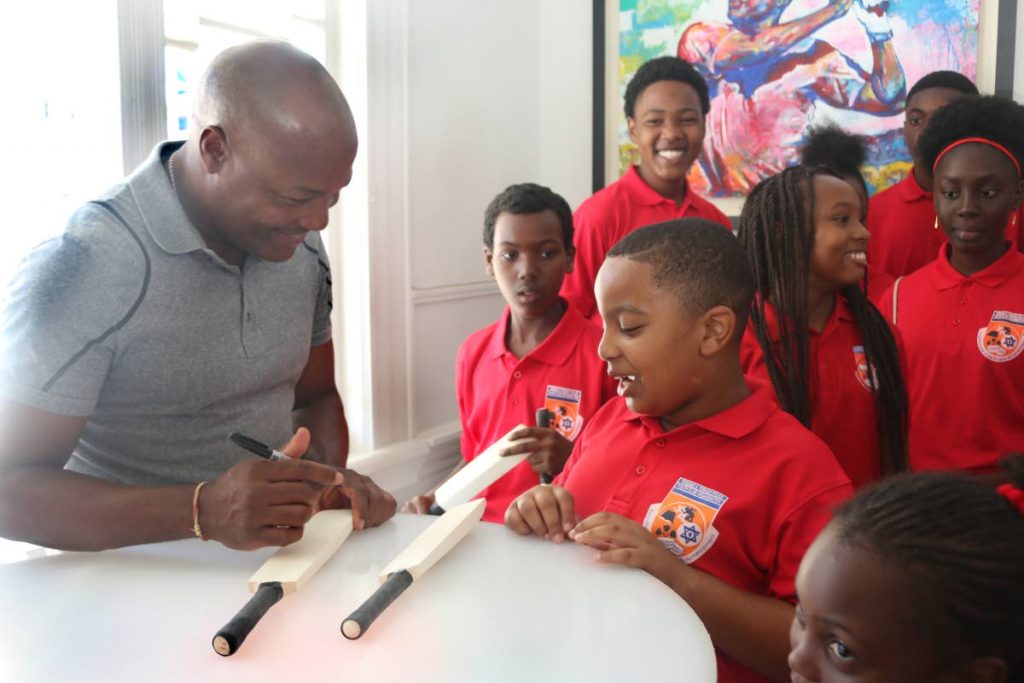Lara's legacy lives on

BRIAN LARA has left a huge legacy, both on and off the field, since he retired from international cricket after the 2007 ICC Cricket World Cup here in the Caribbean.
Lara, who turns 50 today, is rated as one of the greatest cricketers of all time, especially in the modern era (1990s till now).
He is the holder of the highest individual score in first-class cricket, with his unbeaten 501 for Warwickshire against Durham, in June 1994, at Edgbaston, England.
That innings came two months after he broke Sir Gary Sobers’ record of 364 not out for the highest individual score in a Test innings, when he made 375 against England at the Antigua Recreation Ground in St John’s, Antigua.
That record was broken by another left-hander, Australia’s Matthew Hayden, who made 380 against Zimbabwe in 2003, but Lara reclaimed the Test record a year later, with an unbeaten knock of 400 against England, at St John’s. This was the only time a batsman made a quadruple century in a Test innings.
After his record innings of 375, the central part of Independence Square (from George Street to Wrightson Road) in Port of Spain was renamed the Brian Lara Promenade, by then Prime Minister Patrick Manning.
Lara also received a plot of land at Chancellor Hill from the Government, which he used to build a mansion. He was also bestowed the Trinity Cross (now called the Order of the Republic of TT), the highest national award.
Ironically, Manning was again serving as prime minister when Lara made his 400 not out, and the dapper left-handed batsman was rewarded with a sporting venue in his name (albeit long plagued with controversy), named the Brian Lara Cricket Academy, in Tarouba.

Other venues named after the former West Indies captain were the Brian Lara Cancer Treatment Centre in Woodbrook – a stone’s throw away from the Hasely Crawford Stadium – and the Brian Lara Recreation Ground in Cantaro, Santa Cruz, the village where Lara was born and raised.
Similar to what Michael Jordan did for basketball with his gum chewing and tongue sticking out as he drove to the basket, Lara inspired a generation of batsmen trying to imitate his brilliance at the crease. One just has to look at West Indies batsman Darren Bravo to see the similarities in style.
Lara’s father Bunty died of a heart attack in 1989 (when Lara was called up for the WI squad for a Test match against India at the Queen’s Park Oval) and his mother Pearl died of cancer in 2002. In memory of his parents, Lara established the Pearl and Bunty Lara Foundation, which deals with health and social care issues.
He endorses products like Angostura LLB (he worked at Angostura during the early 1990s), Bmobile and Ferreira Optical. He also stages an annual all-inclusive fete, on Carnival Sunday, at his residence.
His talents were not only limited to cricket, as he played competitive football in his younger days (along with lifelong friends Dwight Yorke and Russell Latapy) and table tennis.
Lara, who is also a sports ambassador for TT, is an active golf player and was inducted as an honorary lifetime member of the Royal St Kitts Golf Club.
In January 2007, Lara received an honorary doctorate from the University of Sheffield.
In November 2009, he was appointed an honorary Member of the Order of Australia for his services to West Indies and Australia cricket.
Lara was inducted into the ICC (International Cricket Council) Hall of Fame in September 2012 and, in 2013, he received honorary life membership of the MCC (Marylebone Cricket Club) – the 31st West Indian to receive such an accolade.


Comments
"Lara’s legacy lives on"